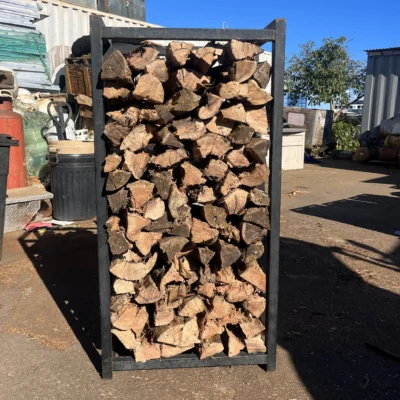9 Tips for Burning Firewood at Home: Safe and Efficient Heating
Burning firewood can be a cost-effective and cozy way to heat your home. But burning wood efficiently and safely requires more than just a match. Here are nine essential tips to make your firewood experience both enjoyable and efficient.Burning Firewood at Home
Table of Contents
- Choose the Right Firewood
- Season Your Wood
- Properly Stack Your Firewood
- Use a Clean, Well-Maintained Fireplace or Stove
- Start the Fire Correctly
- Control Airflow
- Avoid Burning Certain Types of Wood
- Keep a Safe Distance Around the Fire
- Use Efficient Burning Techniques
 1. Choose the Right Firewood
1. Choose the Right Firewood
Not all firewood is created equal. The type of wood you burn can affect how hot your fire gets, how long it burns, and the amount of creosote buildup in your chimney. Here are some popular choices:
- Hardwoods like oak, hickory, and maple burn hotter and longer, making them ideal for sustained heating.
- Softwoods like pine and fir ignite quickly but burn faster, which is useful for kindling but less efficient for prolonged fires.
2. Season Your Wood
Seasoned wood is firewood that has been dried for at least 6-12 months. Properly seasoned wood has a moisture content below 20%, making it burn cleaner and hotter.
- Look for Cracks and Gray Color: Well-seasoned wood has visible cracks and a grayish color compared to freshly cut wood.
- Moisture Meter: Use a moisture meter to check that your wood’s moisture level is below 20% for optimal burning.Burning Firewood at Home
3. Properly Stack Your Firewood
Stacking firewood correctly helps it dry faster and keeps it ready for burning. Follow these stacking tips:
- Keep it Elevated: Stack wood off the ground to reduce moisture absorption.
- Allow for Airflow: Stack wood loosely to promote airflow around each piece, which aids in drying.
- Cover Only the Top: Protect from rain and snow by covering the top of the stack but keep the sides open to allow air to circulate.
4. Use a Clean, Well-Maintained Fireplace or Stove
A clean fireplace or wood stove is crucial for safe and efficient burning. Regular maintenance reduces the risk of chimney fires and ensures proper ventilation.
- Annual Chimney Inspection: Hire a professional to inspect your chimney annually and remove creosote buildup.
- Check Seals and Doors: Ensure doors and seals on wood stoves are intact for optimal efficiency.
5. Start the Fire Correctly
The way you start a fire can impact its efficiency. Here are some quick tips for a clean, lasting fire:
- Use the Top-Down Method: Place large logs on the bottom, with smaller logs and kindling above. Light from the top for a slower, cleaner burn.
- Avoid Accelerants: Never use gasoline, lighter fluid, or other accelerants as they create dangerous fumes and unpredictable flames.
6. Control Airflow
Proper airflow is essential to maintain a steady, efficient burn.
- Open the Damper Fully: When starting a fire, ensure the damper is open to increase airflow and prevent smoke from entering your home.
- Adjust as Needed: Once the fire is burning steadily, adjust the airflow to control the burn rate and maintain heat.
7. Avoid Burning Certain Types of Wood
While it may be tempting to burn any wood available, some types are hazardous or produce excessive smoke.
- Avoid Treated Wood: Painted or treated wood releases toxic chemicals when burned.
- Stay Away from Green Wood: Green or unseasoned wood has a high moisture content, causing it to burn inefficiently and produce more creosote.
- Don’t Burn Driftwood: Driftwood releases toxins and corrosive salts that can damage your stove and chimney.
8. Keep a Safe Distance Around the Fire
Maintaining a safe area around your fireplace or wood stove prevents accidents and fire hazards.
- Keep Flammable Items Away: Ensure that furniture, rugs, and other flammable items are at least three feet away from the fire.
- Use a Fireplace Screen: A screen helps contain sparks and embers, reducing the risk of burns and property damage.
9. Use Efficient Burning Techniques
To get the most out of your firewood, follow these burning tips:
- Burn Hot and Bright: A hotter fire burns wood more completely, producing more heat and less smoke.
- Don’t Overload: Adding too much wood at once can reduce airflow and cause smoldering, which is inefficient and produces more creosote.Burning Firewood at Home
- Only Add Wood as Needed: Add logs gradually to maintain a steady flame.
Final Thoughts
By following these nine tips, you can safely and efficiently burn firewood at home. With the right wood, careful stacking, and proper techniques, you’ll enjoy the warmth and ambiance of a well-maintained fire throughout the season.
